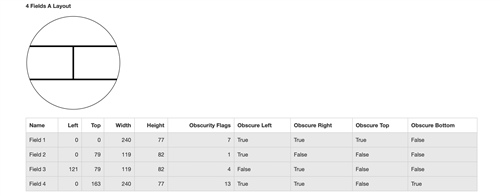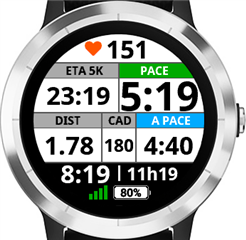Hello!
I'm a beginner in garmin developing APP.. I have a Fenix 5x plus and I want to make a Windsurf APP.
the ideia is have an app with all my information about windsurf equipment.
when going windsurf, I will run the app, choose what sail I will use, what board and what fin, then it will only track me and record how many jibes, jumps and shows live time and speed.
I already search on this forum about my doubts but I still have ones.
To create a Menu 2, what I'm doing wrong?
what is the best way to create a menu like:
the menu is pre defined by me, will be like.
Sails
- 11 m2
- 9.4 m2
- 7.8 m2
- 7.1 m2
- 6 m2
etc...
Boards
- Formula 161l
- Isonic 127l
- Simmer 116l
etc...
Fins
- 70 boss
- 70 Zfins
- 44 Vmax
-39 SMAX
etc...
I know it will be very hard to make this kind of app, but lets give a try...
maybe 10 years a go on my free times I used to be "web developer", using javascript, php, Ajax, ASP, mySQL, HTML :D
Thanks!!!
menu.xml
<menu id="mainMenu_Windsurf">
<menu-item id="item_sail" label="@Strings.menu_sail" />
<menu-item id="item_board" label="@Strings.menu_board" />
</menu>
strings.xml
<strings>
<string id="AppName">teste4</string>
<string id="prompt">Windsurf APP</string>
<string id="menu_sail">Sail</string>
<string id="menu_board">Board</string>
</strings>
teste4App.mc
import Toybox.Application;
import Toybox.Lang;
import Toybox.WatchUi;
class teste4App extends Application.AppBase {
function initialize() {
AppBase.initialize();
}
// onStart() is called on application start up
function onStart(state as Dictionary?) as Void {
}
// onStop() is called when your application is exiting
function onStop(state as Dictionary?) as Void {
}
// Return the initial view of your application here
function getInitialView() as Array<Views or InputDelegates>? {
return [ new teste4View(), new teste4Delegate() ] as Array<Views or InputDelegates>;
}
}
function getApp() as teste4App {
return Application.getApp() as teste4App;
}
teste4Delegate.mc
import Toybox.Lang;
import Toybox.WatchUi;
class teste4Delegate extends WatchUi.BehaviorDelegate {
function initialize() {
BehaviorDelegate.initialize();
}
function onMenu() as Boolean {
var menu = new WatchUi.Menu2({:title=>"Wind Surf"});
menu.addItem(new WatchUi.MenuItem("Sails",null,"item_sail",{}));
menu.addItem(new WatchUi.MenuItem("Boards", null,"item_board", null));
WatchUi.pushView(menu, new teste4MenuDelegate(), WatchUi.SLIDE_IMMEDIATE);
return true;
}
}
teste4MenuDelegate.mc
import Toybox.Lang;
import Toybox.System;
import Toybox.WatchUi;
class teste4MenuDelegate extends WatchUi.MenuInputDelegate {
function initialize() {
MenuInputDelegate.initialize();
}
function onMenuItem(item as Symbol) as Void {
// quando carrega no bortao "vermelho"
if (item == :item_sail) {
System.println("VELAS");
//CREATE SUB MENU
var menu_sub = new WatchUi.Menu2({:title=>"Sails Size"});
menu_sub.addItem(new WatchUi.MenuItem("7.8",null,"sail1",null));
menu_sub.addItem(new WatchUi.MenuItem("7.1", null,"sail2", null));
menu_sub.addItem(new WatchUi.MenuItem("6", null,"sail3", null));
WatchUi.pushView(menu_sub, new teste4MenuDelegate(), WatchUi.SLIDE_IMMEDIATE);
}
else if (item == :sail1) { System.println("you chose sail 7.8"); }
else if (item == :sail2) { System.println("you chose sail 7.1"); }
else if (item == :item_board) { System.println("PRANCHAS"); }
}
}
teste4View.mc
import Toybox.Graphics;
import Toybox.WatchUi;
class teste4View extends WatchUi.View {
function initialize() {
View.initialize();
}
// Load your resources here
function onLayout(dc as Dc) as Void {
setLayout(Rez.Layouts.MainLayout(dc));
}
// Called when this View is brought to the foreground. Restore
// the state of this View and prepare it to be shown. This includes
// loading resources into memory.
function onShow() as Void {
}
// Update the view
function onUpdate(dc as Dc) as Void {
// Call the parent onUpdate function to redraw the layout
View.onUpdate(dc);
}
// Called when this View is removed from the screen. Save the
// state of this View here. This includes freeing resources from
// memory.
function onHide() as Void {
}
}
so... the only error is when I push the select button on "Sails", instead of open a new menu with new options (sail sizes), it doesn't do nothing...
Error: Symbol Not Found Error Details: Failed invoking <symbol> Stack: Encountered app crash.





